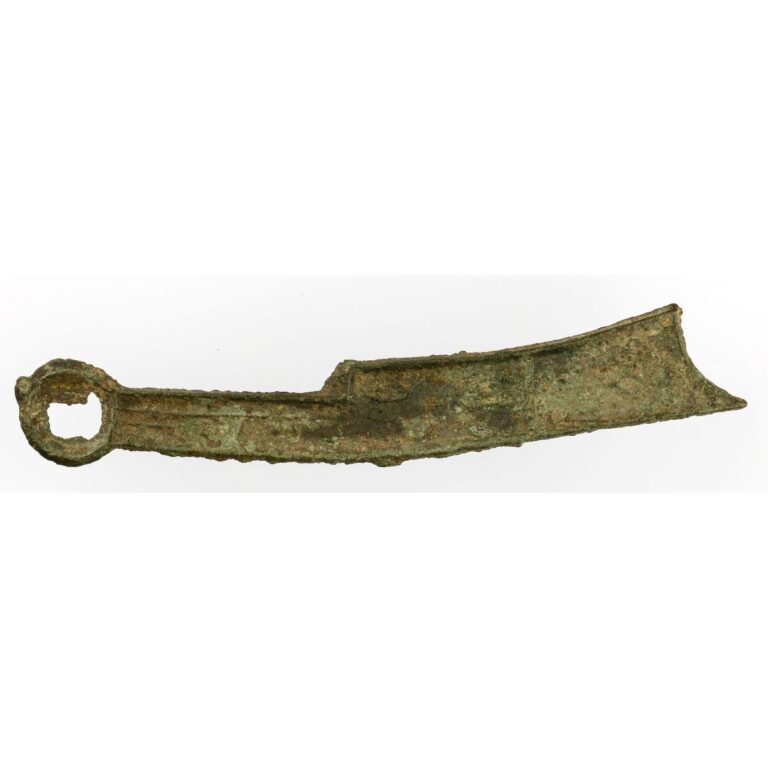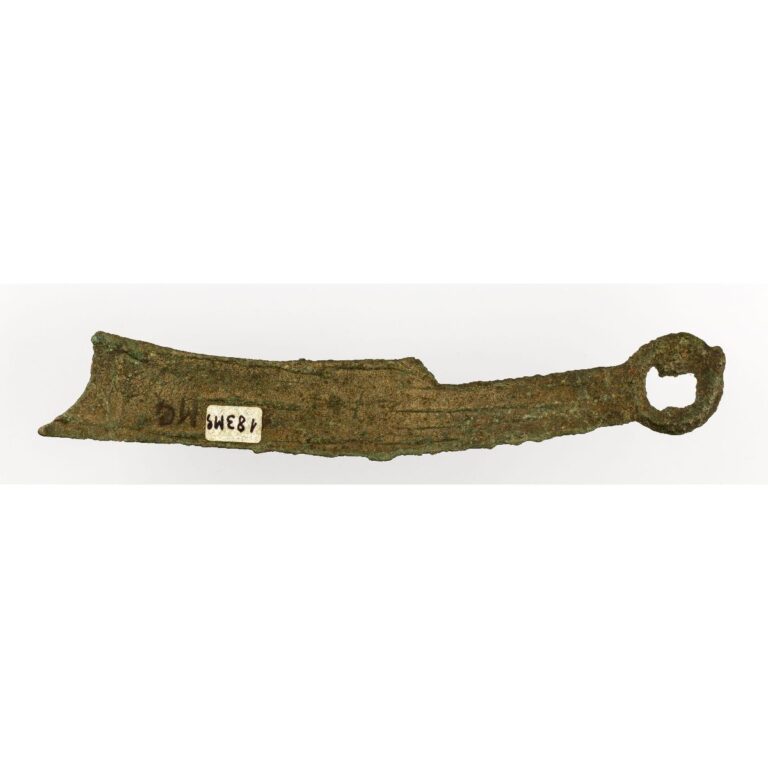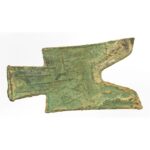Coin in the shape of a knife
During the two periods of the Eastern Zhou Dynasty (770–256 B.C.), the Spring and Autumn Period (771–476 B.C.) and (in particular) the Warring States Period (475–221 B.C.), bronze money appeared in many forms, mostly miniature replicas of everyday objects such as shovels, knives, bells and other musical instruments, keys, clothes, and other types of weapons and tools. Each state of the fragmented Zhou dynasty territory minted its own money, which is why these coins are often referred to as “state coins” or guobu 國布 in Chinese numismatics. The most common types of coins, and the longest in circulation, were shovel-shaped coins (bubi 布幣 or buqian 布錢) and knife-shaped coins (daobi 刀幣 or daoqian 刀錢).
The large knife-shaped coin in the photo is an example of the so-called “knife of the state of Qi” (Qi dao 齊刀). This type of coin was in circulation during the Warring States ... more
During the two periods of the Eastern Zhou Dynasty (770–256 B.C.), the Spring and Autumn Period (771–476 B.C.) and (in particular) the Warring States Period (475–221 B.C.), bronze money appeared in many forms, mostly miniature replicas of everyday objects such as shovels, knives, bells and other musical instruments, keys, clothes, and other types of weapons and tools. Each state of the fragmented Zhou dynasty territory minted its own money, which is why these coins are often referred to as “state coins” or guobu 國布 in Chinese numismatics. The most common types of coins, and the longest in circulation, were shovel-shaped coins (bubi 布幣 or buqian 布錢) and knife-shaped coins (daobi 刀幣 or daoqian 刀錢).
The large knife-shaped coin in the photo is an example of the so-called “knife of the state of Qi” (Qi dao 齊刀). This type of coin was in circulation during the Warring States period in the State of Qi 齊, in the area of present-day Shandong Province. Coins of this type most probably date from the period between 400 and 200 B.C. They are characterised by three parallel lines on each side of the handle, while an archaic inscription, usually in three characters, can be seen on the blade. This coin is relatively well preserved, so the inscription in three archaic characters can still be read on the blade: Qi zhi fahua 齊之法化, which could be translated as “official” or “legal money of the State of Qi”. At the end of the handle there was a round opening, like that on a real knife. For coins, it probably also had a practical function, as several pieces could be strung together at once. (MG)





































Do you have a comment or additional information about the subject?